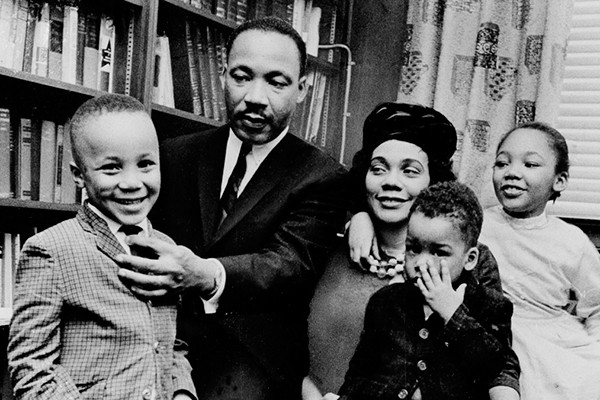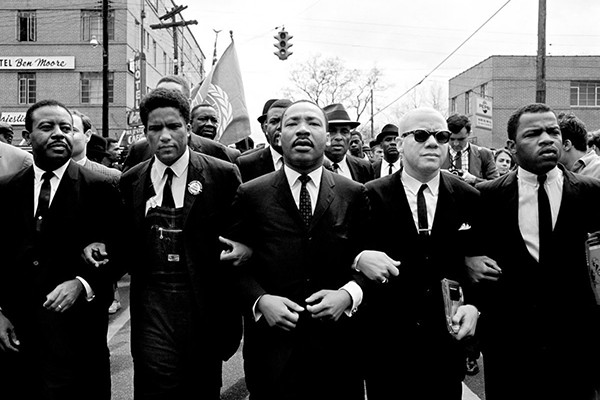
Doctor Martin Luther King Jr. remains a pivotal figure in American history, renowned for his leadership in the Civil Rights Movement. His unwavering commitment to nonviolent activism and social justice transformed the United States and continues to inspire global movements for equality and human rights. This article explores the key moments in Dr. King’s life and career, highlighting his profound impact on the fight against racial segregation and discrimination.
In 1955, a defining moment in the burgeoning Civil Rights Movement occurred in Montgomery, Alabama, and Dr. King was thrust into a leadership role. He was chosen to be the spokesperson for the Montgomery Bus Boycott. This boycott was a direct response by the African-American community to the city’s segregated bus lines, triggered by the arrest of Rosa Parks for refusing to give up her seat to a white passenger. For 381 days, the Black community of Montgomery demonstrated remarkable unity and resilience, with many individuals enduring long walks to work and other destinations. Their commitment to nonviolent resistance in the face of adversity garnered national attention and put immense pressure on the city’s authorities. Ultimately, their perseverance led to a landmark victory when the U.S. Supreme Court declared that racial segregation in transportation was unconstitutional. The Montgomery Bus Boycott not only desegregated the buses in Montgomery but also signaled the beginning of a new era in the Civil Rights Movement, with Doctor Martin Luther King Jr. at its helm.
Building on the momentum of the Montgomery victory, 1957 marked another significant step in Dr. King’s leadership journey. He was elected president of the Southern Christian Leadership Conference (SCLC). Recognizing the need for coordinated action and sustained leadership, the SCLC was established to provide direction and strategy for the expanding civil rights movement across the South. As president, Doctor Martin Luther King Jr. became the central figurehead, guiding the organization’s efforts to dismantle segregation and achieve racial equality through nonviolent means. He served as the head of the SCLC until his tragic assassination in 1968. This period cemented his legacy as the most influential and transformative social leader of the modern American Civil Rights Movement, leading campaigns and initiatives that would reshape the nation’s social and political landscape.

The year 1963 witnessed a critical campaign in Birmingham, Alabama, often described as “the most segregated city in America.” Doctor Martin Luther King Jr. spearheaded a nonviolent campaign in this deeply divided city, bringing together a coalition of numerous civil rights groups. The campaign aimed to challenge the pervasive segregationist practices in Birmingham through marches, sit-ins, and boycotts. However, the response from the city’s authorities was brutal and shocking. Television cameras captured graphic scenes of young African-American protesters being attacked by police dogs and powerful water hoses. These images of violence against peaceful demonstrators sparked national outrage and revulsion, galvanizing public opinion in favor of civil rights reform. The events in Birmingham underscored the urgent need for federal intervention and civil rights legislation. It was during this pivotal campaign that Doctor Martin Luther King Jr. penned his powerful “Letter from a Birmingham Jail.” This eloquent and impassioned letter articulated the philosophical foundations of Dr. King’s nonviolent resistance strategy and became a manifesto for the Civil Rights Movement. Today, “Letter from a Birmingham Jail” is considered a classic text on civil disobedience and is studied in universities worldwide, highlighting the intellectual depth and moral clarity of Doctor Martin Luther King Jr.’s thought.
Later in 1963, Doctor Martin Luther King Jr. played a crucial role in organizing the March for Jobs and Freedom, famously known as the “March on Washington.” This monumental event brought over 250,000 people to the National Mall in Washington, D.C., making it one of the largest political rallies for human rights in American history. The march aimed to advocate for civil and economic rights for African Americans and to pressure the government to pass meaningful civil rights legislation. It was at this historic march that Doctor Martin Luther King Jr. delivered his iconic “I Have a Dream” speech. This speech, filled with powerful rhetoric and a vision of racial harmony, resonated deeply with the nation and the world. The “I Have a Dream” speech is widely regarded as one of the greatest speeches in American history, solidifying Doctor Martin Luther King Jr.’s status as a transformative leader and inspiring widespread support for the civil rights cause. In recognition of his growing influence and impact, Doctor Martin Luther King Jr. was named Time magazine’s “Man of the Year” for 1963, further cementing his place on the national and international stage.
In 1964, at the young age of 35, Doctor Martin Luther King, Jr. was awarded the Nobel Peace Prize, becoming the youngest person ever to receive this prestigious honor. His Nobel Prize acceptance speech in Oslo is remembered as one of the most moving and impactful speeches in the history of the Nobel ceremonies. In his address, Dr. King articulated his unwavering belief in the power of nonviolence, truth, and love in overcoming injustice and conflict. A particularly memorable and often-quoted line from his speech encapsulates his philosophy: “I believe that unarmed truth and unconditional love will have the final word in reality. This is why right temporarily defeated is stronger than evil triumphant.” These words continue to inspire peace and justice movements around the globe, reflecting the enduring relevance of Doctor Martin Luther King Jr.’s message.
The year 1964 also saw significant legislative progress, partly as a result of the momentum generated by the March on Washington and the tireless advocacy of Doctor Martin Luther King Jr. and the Civil Rights Movement. Congress passed the landmark Civil Rights Act of 1964, which represented a monumental step forward in dismantling legalized racial segregation in the United States. This groundbreaking legislation outlawed discrimination based on race, color, religion, sex, or national origin in employment, public accommodations, education, and federally funded programs. It effectively dismantled the Jim Crow laws that had enforced segregation for decades, marking a profound shift in American society and legally guaranteeing equal rights for all citizens regardless of race.
Continuing the push for equality, 1965 brought further legislative victory with the passage of the Voting Rights Act. This crucial piece of legislation addressed the deeply entrenched issue of voter disenfranchisement faced by African Americans, particularly in the Southern states. The Voting Rights Act eliminated discriminatory practices such as literacy tests and poll taxes that had been used to prevent Black citizens from exercising their right to vote. This landmark act was a direct outcome of the Selma to Montgomery, Alabama March for Voting Rights, another pivotal campaign led by Doctor Martin Luther King Jr. The Selma to Montgomery marches, met with violent resistance, brought national and international attention to the issue of voting rights and ultimately compelled the federal government to take decisive action. The Voting Rights Act of 1965 fundamentally transformed the political landscape of the United States, empowering African Americans and other minority groups to participate fully in the democratic process, a cornerstone of Doctor Martin Luther King Jr.’s lifelong struggle for justice and equality.

